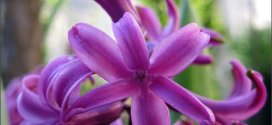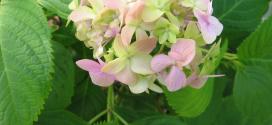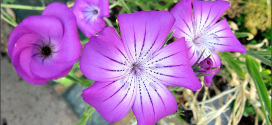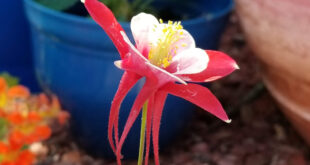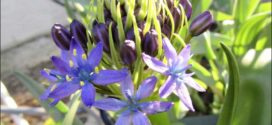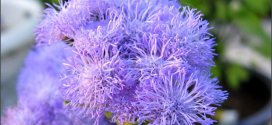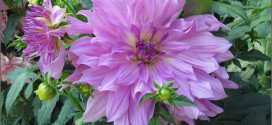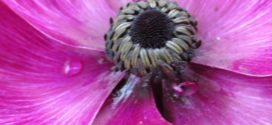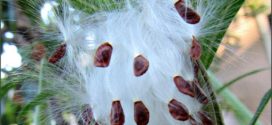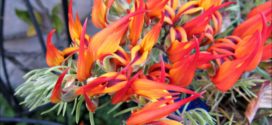Dutch Hyacinth, Hyacinthus orientalis. Attractive to bees, butterflies and/or birds. Flowers are fragrant. This plant is suitable for growing indoors. Average Water Needs; Water regularly; do not overwater. Flowers are good for cutting Severe poisoning from hyacinth or tulip poisoning is often seen when dogs dig up freshly planted bulbs or having access to a large bag of them. When …
Read More »Tag Archives: Toxic
Hydrangea
Bigleaf Hydrangea, French Hydrangea. Up until recently, if you wanted a blue Hydrangea, you needed acidic soil; otherwise it was pink. Toxicity: Toxic to Dogs, Toxic to Cats, Toxic to Horses Toxic Principles: Cyanogenic glycoside Clinical Signs: Vomiting, depression, diarrhea. Cyanide intoxication is rare – usually produces more of a gastrointestinal disturbance. Family: Hydrangeaceae (hy-drain-jee-AY-see-ee) (Info) Genus: Hydrangea (hy-DRAIN-juh) (Info) …
Read More »Corncockle
Corncockle is a pretty flower that bobs in the wind on slender stalks. Warning: Probably should not be planted around small children. All parts of the plant are toxic to eat. But then again, so are many other common plants such as daffodils and foxgloves. I still recommend it for Sunnyvale gardens. The Corncockle originated in Europe where it grew …
Read More »Columbine
Intense, dark rosy pink outer petals contrast beautifully with white centers on 2” wide, long-spurred blooms. Makes a great cut flower! Its vigorous upright, airy habit make it a nice addition to woodland gardens, sunny rock gardens, and cottage gardens. 2’x2’ when in bloom, with flowers borne on tall branching stems held about 1’ above showy, lacy foliage. Like its …
Read More »Scilla peruviana
Scilla peruviana is a evergreen perennial makes a spring-time statement with 50 to 100 deep-blue, starry blossoms atop large, cone-shaped flowers. Grow it alongside other spring flowering bulb crops such as daffodils, hyacinths and tulips. These unique flowers have an impressively long bloom time. Short dark green strap-shaped leaves emerge in the fall to form tight rosettes to 18 inches …
Read More »Ageratum
Floss Flower, Ageratum, has small, fluffy, blue button-like flowers add color all season but especially in the fall. It attracts birds, butterflies, and hummingbirds. It continuously blooms for a long time. No dead heading needed. It is tolerant of heat. It is native to North America. Excellent choice for Sunnyvale gardens.
Read More »Dahlia
These colorful spiky flowers, native to Mexico, bloom from midsummer to first frost. Each flower has one head per stem. The flowers range in color and size, from the giant 10-inch “dinnerplate” blooms to the 2-inch lollipop-style pompons. We have grown dahlias in our Sunnyvale garden for over 20 years. If you are patient then you can treat the dahlia …
Read More »Icelandic Poppy 2017
Iceland poppies are hardy but short-lived perennials, often grown as biennials, that yield large, papery, bowl-shaped, lightly fragrant flowers supported by hairy, one foot, curved stems among feathery blue-green foliage 1-6 inches long. This year’s crop was planted in our former fire-pit surrounded by cool-weather cyclamen and english daisy. They bloom in April after the crocus, hyacinth, and tulips. Iceland …
Read More »Milkweed
Milkweed is the only food source for Monarch Caterpillars and are a mixture of the best nectaring plants for all butterflies. Natural Bridges State Park is just over the mountains in Santa Cruz and is a major destination of the Monarch butterflies. Known to have some medicinal value as a cough expectorant, the plant’s milky white sap can also cause …
Read More »This Sunnyvale Garden – March 2017
We had average March weather in our Sunnyvale garden: about 8 days of rain but less in volume than February. We still had a lot of flowers: Pea-shrub, orinthogalum, several types of crocus, daffodils, tulips, hyacinths, freesia, armeria, plum, apricot, flowering plum, viola, cyclamen, english daisy, yarrow, bacopa, lavendar. On the vegetable side: cilantro, tomatoes, beet, garlic, rhubarb, chile, basil. …
Read More »